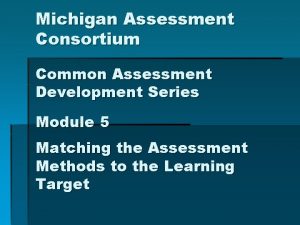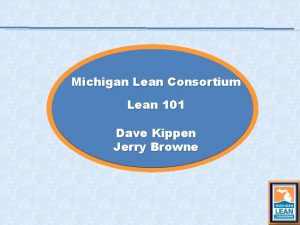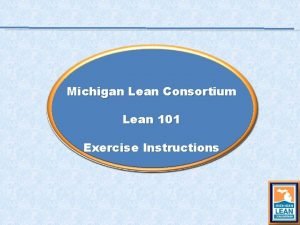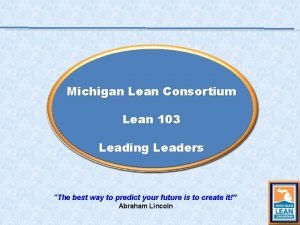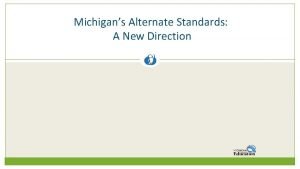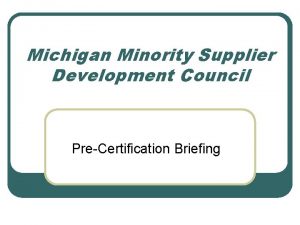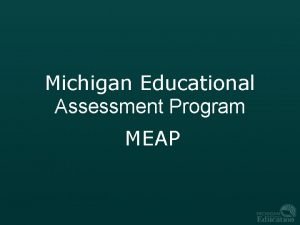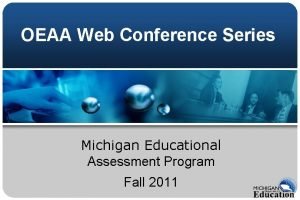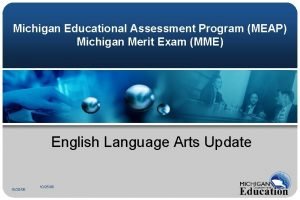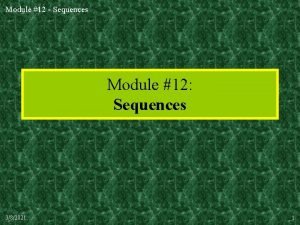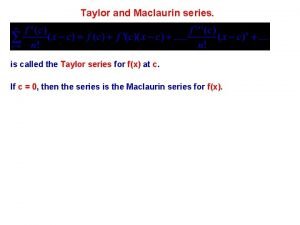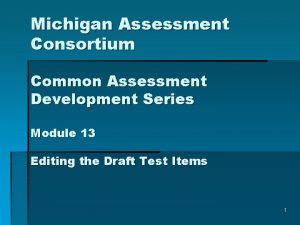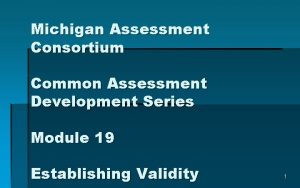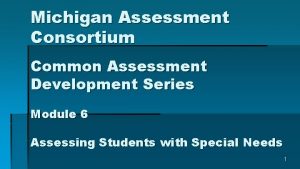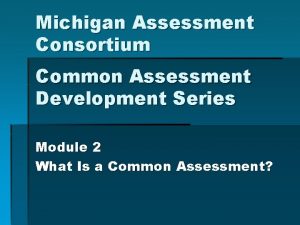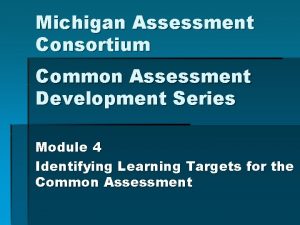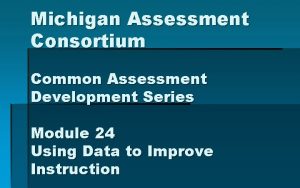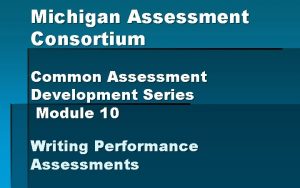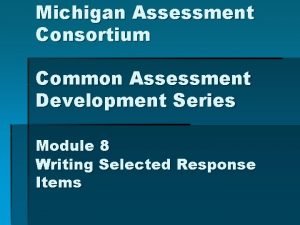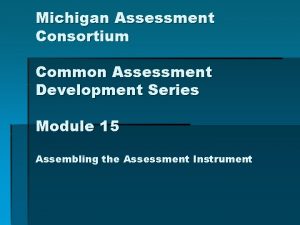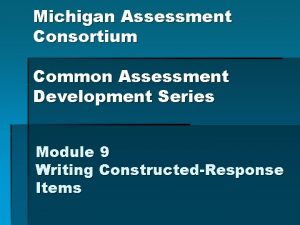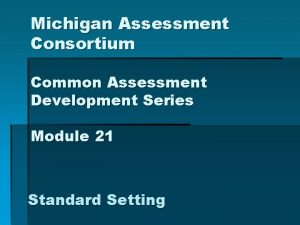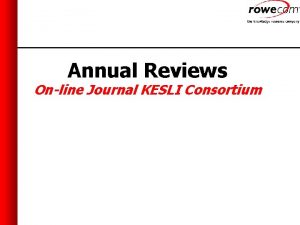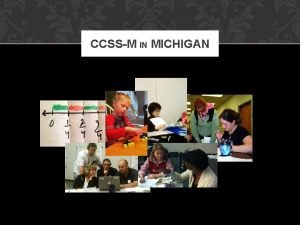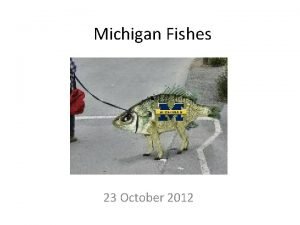Michigan Assessment Consortium Common Assessment Development Series Module




















- Slides: 20

Michigan Assessment Consortium Common Assessment Development Series Module 14 Detecting and Eliminating Bias in Assessment Items

Narrated By: Julie Mc. Daniel Oakland Schools 2

Previous Modules § You learned how to: § Design your common assessment § How to develop items for that assessment § How to assure that your items are of the highest quality 3

This Module § § § Begin an initial step in the editing process Understand bias Learn some ways to detect and to eliminate bias 4

Bias Removal § Bias is the extent to which student performance is misrepresented or inaccurately represented due to pollution in the items § By minimizing bias, then you will be able to determine what students really know and are able to do 5

Example of Bias § English language learner and mathematics assessment 6

Bias Removal Process § One effective way for you to do this is for a group of teachers in your school to review the items you developed or selected looking for content that would favor (or disadvantage) any learner 7

Sources of Bias § Stiggins has identified three sources of bias: § Those within the learner § Those within the context of the classroom § Those found within the assessment itself 8

Bias Within the Learner § Examples include: § A student in poor health § A student with a physical challenge § An English language learner § A student with real life issues outside the classroom § You should take into account these things within the learner that may prevent an accurate demonstration of knowledge 9

Bias Within the Classroom § This type of bias is called classroom or bias in the assessment context § Poor lighting and noise interruption § Lack of learning-conducive environments § Low degree of trust 10

Bias Within the Assessment § This bias exists within the assessment itself § This bias prevents students from demonstrating full understanding § Examples include § Vague or missing directions § Poorly worded or confusing questions § Cultural insensitivity 11

Bias by Assessment Method § There are sources of bias unique to different types of items § Multiple-choice items: § Amount of reading § Size and type of font § Reading difficulty of the questions § Use of separate test booklet and answer sheet § Number of test items used 12

Bias by Assessment Method § There are sources of bias unique to different types of items § Constructed-response items: § Students with poor reading and/or writing skills § Teachers who are unfamiliar a common rubric § Teachers who are inadequately trained § Students who do not know how their responses will be evaluated 13

Bias by Assessment Method § There are sources of bias unique to different types of items § Performance assessments: § Bias within the task itself § Inconsistent assessment administration § Inadequately trained scorers 14

Steps to Avoid Bias in Performance Assessment § Familiarize students with the tasks before the assessment § Pilot the assessment § Develop high-quality rubrics and scoring procedures § Provide safe assessment environment 15

Reviewing Items for Bias § All assessments, especially teacher-constructed assessments, should be reviewed § Identify potential biases § Correct the test or the testing situation § Follow standards of assessment quality to identify and correct bias in assessments 16

Group Content Reviews § Groups of teachers are more effective in detecting bias than individuals: § More accurate in identifying distortion § More efficient and effective in groups § More powerful when done as a professional community (can learn from others how to identify and eliminate biased items) 17

Summary § Bias in assessments prevents students from demonstrating what they know and can do § Bias can occur in types of assessments § Group bias reviews are the most effective detection method § Critiquing assessments for bias an important step in editing 18

Series Developers § § § § Kathy Dewsbury White, Ingham ISD Bruce Fay, Wayne RESA Jim Gullen, Oakland Schools Julie Mc. Daniel, Oakland Schools Edward Roeber, MSU Ellen Vorenkamp, Wayne RESA Kim Young, Ionia County ISD/MDE 19

Development Support for the Assessment Series § The MAC Common Assessment Development Series is funded in part by the Michigan Association of Intermediate School Administrators § In cooperation with § Michigan Department of Education § Ingham and Ionia ISDs, Oakland Schools, and Wayne RESA § Michigan State University 20
 Michigan assessment consortium
Michigan assessment consortium Michigan lean consortium
Michigan lean consortium Standard work pig template
Standard work pig template Michigan lean consortium
Michigan lean consortium Common core essential elements michigan
Common core essential elements michigan C device module module 1
C device module module 1 Michigan minority supplier development council
Michigan minority supplier development council Oeaa secure site
Oeaa secure site Oeaa
Oeaa Meap michigan
Meap michigan Hollila
Hollila Module 12 sequences and series answers
Module 12 sequences and series answers Maclaurin series vs taylor series
Maclaurin series vs taylor series Balmer series lyman series
Balmer series lyman series Taylor series of composite functions
Taylor series of composite functions Taylor frederick
Taylor frederick Ibm p series servers
Ibm p series servers Feedback amplifier
Feedback amplifier Series aiding and series opposing
Series aiding and series opposing Arithmetic sequence sum formula
Arithmetic sequence sum formula Série de maclaurin
Série de maclaurin
